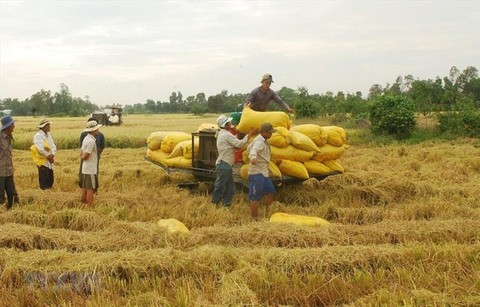
Farmers harvest paddy in the Mekong Delta. The central bank has required the institutions to simplify administrative procedures, shorten the time needed to approve loans and diversify credit products for the rice industry. — Photo baochinhphu.vn
Under a document issued late last week, the SBV has required the institutions to simplify administrative procedures, shorten the time needed to approve loans, and diversify credit products for the rice industry.
The SBV has also asked the institutions to proactively work with businesspeople, enterprises, and producers to identify measures to handle difficulties, creating conditions for customers to gain access to credit for producing, buying, processing, and storing rice for export.
Besides, the institutions have also been instructed to promote the implementation of credit policies from the Government and the SBV on boosting agriculture and rural development, including policies relating to loans for rice export activities and preferential credit for certain sectors, including rice.
Viet Nam’s rice exports this year are expected to benefit from many favourable conditions, including high global demand, to reach seven million tonnes.
According to the Vietnam Food Association, Viet Nam’s rice export prices maintained growth in the first two months of this year. The average export price of rice in the period reached US$528.5 per tonne, up 9.86 per cent over the same period in 2022.
Rice production for export is mostly in the Mekong Delta while that in other regions is mainly for domestic consumption, said the Ministry of Agriculture and Rural Development (MARD)’s Department of Crop Production.
Deputy Director of the Can Tho municipal Department of Industry and Trade Tran Minh Kiet said since the beginning of this year, exporters have fulfilled signed contracts and struck new deals. The agreements have been mostly shipping jasmine rice to the Philippines, Ghana, Cameroon, Ivory Coast, and especially the Republic of Korea.
With the EU market, under the EVFTA, Viet Nam is granted a quota of 80,000 tonnes, of which 30,000 tonnes are white rice, 30,000 tonnes are fragrant rice, and 20,000 tonnes are brown rice. — VNS